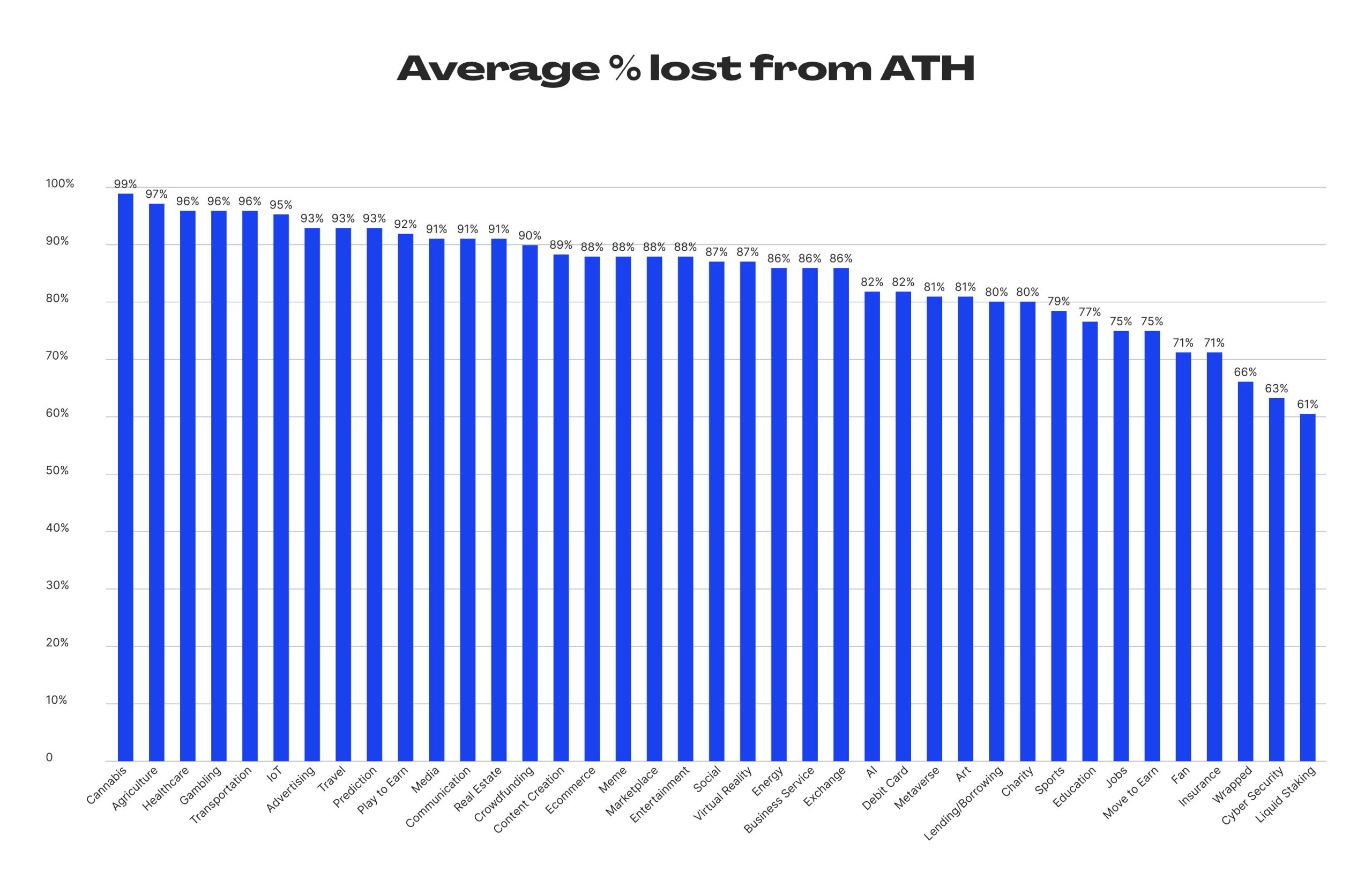In this market analysis, we provide…
- …a general overview of the Web3 sectors.
- …an overview of the most competitive, highly competitive and low-value sectors.
- …sectors that can make a meaningful impact beyond the realm of blockchain.
- … and the most promising sectors for a niche competitive strategy.
The state of the Web3 market
2022 was a bumpy year for Web3. Macroeconomic headwinds, regulatory uncertainty, and the demise of some of Web3’s biggest projects rocked the young industry.
Despite this, the number of cryptocurrency owners rose from 306 million in January to 425 million in December, according to crypto.com. A figure that CryptoSlate expects to reach a staggering 1.2 billion people by 2025.
Adoption hasn’t stopped – nor has innovation.
Over time, blockchains have become more scalable and interoperable. New use cases are emerging, both inside and outside the Web3 landscape. Use cases that are promising to have a positive impact within their respective niches.
In this report, we uncover the unprecedented opportunities and most promising sectors in the Web3 landscape.
Research Methodology – Unveiling the Web3 Landscape
For our analysis, we use data from CryptoSlate. We looked at factors like the number of projects and market value to find out which sectors are competitive and have niche potential.
We also examined volatility within each sector. This helped us gain insight into sector resilience and potential growth opportunities for Web3.
The niche (not) worth tapping into
The most cluttered sectors
First, let’s take a look at the number of projects within each sector.

Our analysis reveals that several sectors in the Web3 landscape are highly cluttered.

The least crowded sectors
On the other side of the spectrum, we find sectors that could serve as niches.

For simplicity’s sake, we will now focus on these 14 sectors to analyze their potential.
Sectors by market capitalization
First, we compare the current market value of each sector.
We use this as an indicator of the profitability of each sector, as it represents the demand for its products and services.
The tables below show sectors sorted by market capitalization.

A few cluttered sectors, such as marketplaces and business services, turned out to be less valuable than the number of projects would indicate. But overall, not much to see here.

Most of the niche sectors have relatively low market values. This does not apply to liquid staking, which leads the pack by a factor of 10.
One could argue that a low market capitalization reduces the potential profitability of these niches.
However, this does not need to be the case. It’s possible that a new innovation or development in a given sector could create new opportunities for profitability.
Nonetheless, the data from the comparison can help us identify how sectors are currently performing. This provides us guidance on where to focus our attention and resources.
Sector-specific market capitalization per project
We further evaluate the value of projects within specific sectors by comparing market capitalization per project.
And we came up with some interesting results. Let’s run the numbers…

The cluttered sectors are dominated by exchanges with a market cap of $804,049,502.
However, it’s the niche sectors that truly caught our attention.

Liquid staking takes the crown in the niche sector, standing tall as the lone crypto-for-crypto use case.
But the remaining contenders are the sectors that transcend Web3 and offer real-world use cases.
Among them, Insurance, Jobs and recruiting, Education and (E)-commerce and debit cards show substantial market caps. This indicates significant investment and confidence in potential growth. Since these sectors also have a low number of competitors, they could serve as promising sectors for a niche competitive strategy.
To gain deeper insights, we’ll dive into sector volatility.
Resilient sectors
Hypes, speculation and risk assets on steroids. It’s all part of Web3. Volatility is what we sign up for. But not all sectors are the same.
The chart below gives an idea of the average value lost by projects from their all-time highs. An indicator of the resilience of each sector.

Surprisingly, the sectors we identified as attractive niches have showcased resilience during the current market drawdown. Insurance, jobs and recruiting, education, and (e)-commerce and debit cards have experienced low declines (71%, 75%, 77%, and 82% respectively) compared to other sectors.
Volatility and Competition
We now want to gauge the maturity and level of competition within each sector. For this, we look at the standard deviation of market capitalization relative to the total market capitalization.
A low value in this metric – A mature, stable, and harmonized competitive landscape.
A high value in this metric – A likely presence of monopolies or duopolies.

The niches we previously identified as attractive have a higher degree of dominance. In fact, most of them have clear leaders within their respective sectors.
In mature markets, however, the reign of monopolies is often short-lived. It is easier to exploit the weaknesses of a single dominant competitor than to face a multitude of rivals. This creates opportunities for emerging players to make their mark.
An opportunity to innovate and disrupt.
Sector Spotlight
Now that we’ve unearthed the hidden gems, let’s polish them up and dive a little deeper.
Jobs and Recruiting
Braintrust shines as the leader in this niche. The decentralized talent network enables direct peer-to-peer connections between businesses and freelancers. No more middlemen taking a cut.
The project has gained significant attention as a disruptor in the gig economy and is – so far – without competition.
Insurance
The insurance industry is ripe for disruption by Web3. Smart contracts enable automated claims processing. They can distribute payouts fairly, efficiently, and transparently.
So far, however, most projects only insure blockchain-native assets. Like inSure, the current leader in this space.
So there are plenty of opportunities to extend the benefits of Web3 beyond the blockchain and into the insurance industry.
Charity
Half of the Forbes Top 100 charities are already embracing crypto and non-fungible tokens (NFTs) for fundraising, according to CoinDesk.
There is a potential synergy between Web3 and charity based on transparency and trust. Our research did not identify any outstanding active charity projects. A valuable opportunity to create one and make a meaningful difference in the world.
(E)-commerce and debit cards
Where and how can users spend their cryptocurrency? This industry may be the answer.
The UQUID ecosystem bridges (e-)commerce and debit cards with DeFi, blockchain payments, peer-to-peer shopping with a pinch of shop-to-earn incentives.
UQUID is the clear leader in this sector and is waiting for a challenge.
Conclusion
The above sectors have considerable market capitalization, limited competition, and potential for disruption. At the same time, Web3 technologies have reached a level of maturity and stability. Adoption continues to grow, and multi-billion dollar industries await us.
The stage is set for innovators to make their mark on the Web3 landscape. And shape the future of industries with innovation, transparency, and real-world impact.
There’s no shortage of opportunities in 2023.



